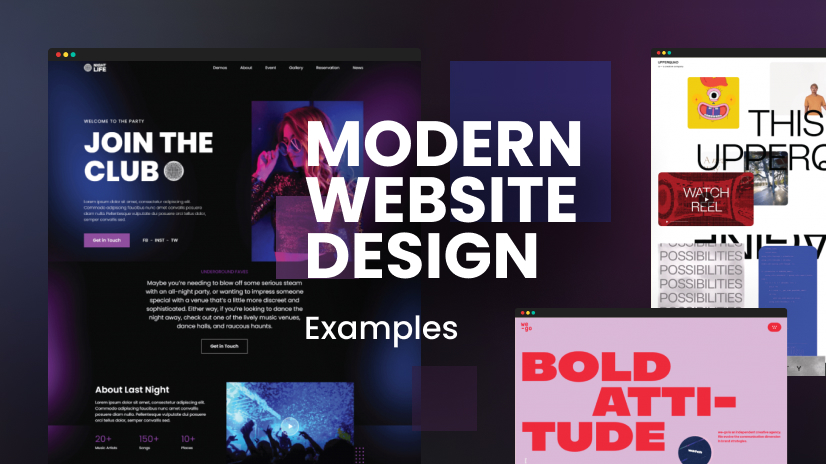In the current swift virtual world, the initial impression of your business is often made through the internet. A well-designed website can be the secret to unlocking expansion and transforming prospective customers into loyal clients. As customer behavior continues to change towards increasingly digital engagements, businesses that invest in cutting-edge web design are not just surviving but are actively spearheading the way in their respective markets.

Exceptional web design goes above aesthetics; it encompasses consumer interaction, performance, and branding. In a world where attention spans are minimized, designing a website that attracts users and drives engagement is crucial. From adaptive layouts to intuitive navigation, the features of current web design serve a key role in elevating your business and separating it from the market players. Implementing these innovative approaches can lead to a brighter, even more thriving future.
Current Developments in Website Creation
In today's digital landscape, minimalism continues to influence website aesthetics. Businesses are choosing for neat and simple layouts that boost user experience by emphasizing content over overwhelming visuals. This approach not only makes websites appear modern but also guarantees quicker loading speeds and simpler navigation. By centering on critical elements, brands can successfully communicate their message and encourage user engagement without distracting them with distractions.
Another trend gaining popularity is the increase of dark-themed designs. Numerous users value the choice for a comfortable visual experience, particularly during nighttime browsing. This design not only minimizes eye strain but also provides a smooth aesthetic that fits well with contemporary branding. As an increasing number of platforms adopt dark interfaces, companies are encouraged to think about how this aesthetic preference can improve their online presence and attract to technology-oriented audiences.
Adaptive web design remains vital as mobile usage continues to rise. With an increasing number of consumers using websites via smartphones and tablets, creating designs that adjust smoothly to various device dimensions is a requirement. A flexible design not only improves accessibility but also boosts search engine rankings, making it an integral part of any successful web design strategy. By catering to users across platforms, companies can ensure they do not miss out on potential customers.
Crucial Resources for Modern Designers
In the present fierce market, web designers need to leverage a range of tools that improve creativity and optimize workflows. One important tool is a reliable design software, such as Sketch, which enables collaborative design processes and iteration. These applications enable designers to create interactive mockups that clients can examine and provide comments on in real time. This collaborative aspect reduces the time spent on changes and ensures that the ultimate product matches closely with client wants.
Another crucial tool for web designers is a CMS like WordPress. These solutions enable designers to develop and administer websites effectively. With their extensive range of layouts and plugins, designers can adapt functionalities and designs without extensive coding knowledge. This flexibility facilitates quicker delivery and a more effective design workflow, giving businesses the ability to launch their sites faster and remain competitive in the field.
Finally, including analytics tools such as Mixpanel is vital for any contemporary web designer. These tools provide valuable insights into user activity, allowing designers to refine their strategies based on real data. Understanding how users interact with a website can help in making thoughtful design decisions that elevate user interaction. By utilizing analytics, designers can not only enhance the effectiveness of their web designs but also help businesses meet their objectives more effectively.
Best Practices for User Engagement
Engaging users effectively begins with understanding users' needs and preferences. It is essential to create a user-centric design that makes navigation easy to navigate. This means organizing content logically and ensuring that essential information is readily available. Responsive design plays a key role in this process, as users often switch devices. Providing a seamless experience across mobile and desktop versions can enhance user satisfaction and encourage longer engagement with your site.
Visual hierarchy is yet another important aspect of web design that significantly impacts user engagement. Smart use of color, typography, and spacing can guide users' attention to key areas of your website. Highlighting calls to action through contrasting colors and strategic placement can increase user interactions. Additionally, using jw-digital.co.uk and infographics can convey information more vividly and memorably than text alone. Allowing users to take in content at a glance encourages them to explore further.
Finally, incorporating interactive elements can elevate the user experience. Features such as surveys, polls, and calculators can make the site feel dynamic and personalized. These interactive tools not only engage users but also provide valuable insights into their preferences and habits. Providing opportunities for user input, such as comment sections or rating systems, further fosters community involvement, making users feel valued and encouraging them to come back.
